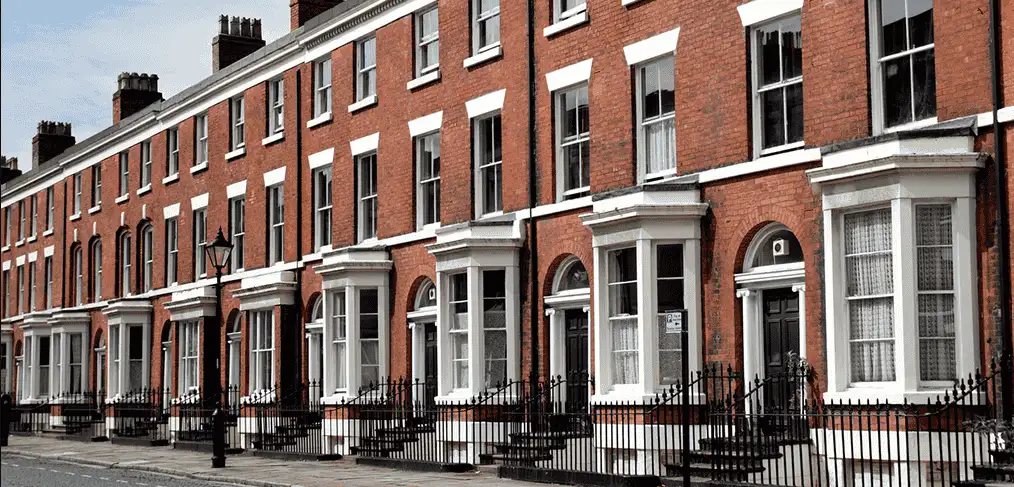As a landlord or property investor, leveraging your assets efficiently is key to maximizing your portfolio’s potential. A second charge mortgage on a buy-to-let property can be a strategic tool for accessing equity without disturbing your existing mortgage arrangements. This guide provides essential insights into when and why to consider a second charge mortgage for your investment properties.

Second Charge Mortgage Buy-to-Let
Want a second charge mortgage for buy-to-let property? Learn how a second charge buy-to-let works, when you’d use one, what criteria lenders consider and more.
Speak to a second charge adviser
Fill out this enquiry form and we’ll contact you to book a free call with one of our mortgage experts.
"*" indicates required fields
Second Charge Mortgage for Buy-to-Let Property
Contents
What Is a Second Charge Buy-to-Let?
A second charge buy-to-let mortgage is a secondary mortgage taken out with a new lender against a rental property which already has a primary mortgage on it. This financial product allows landlords to release equity from their property without having to remortgage and disturb their existing mortgage terms. It functions completely separately from the first mortgage, with its own rate, mortgage term, monthly payment and conditions.
A second charge buy-to-let can provide funds that can be used for various purposes such as property improvements, expanding a property portfolio, or managing other financial commitments.
How Does a Second Charge Buy-to-Let Work?
Loan structure
- Interest-only: many second charge buy-to-let mortgages are structured as interest-only loans. This means that the borrower only pays the interest on the loan each month, with the principal amount being repaid at the end of the loan term via a repayment vehicle. This structure can help keep monthly payments lower, which is often beneficial for managing cash flow in a rental business
- Repayment: alternatively, some second charge buy-to-let mortgages are repayment loans, where both interest and a portion of the principal are repaid monthly. This ensures that the loan is fully repaid by the end of the term, reducing the overall debt burden over time
Terms and conditions
- Loan term: the term of a second charge buy-to-let mortgage can vary, typically ranging from 5 – 30 years. The choice of term will affect monthly payments and the total amount of interest paid over the life of the loan
- LTV (loan-to-value ratio): the LTV for second charge buy-to-let mortgages usually ranges from 60% – 85%, depending on the lender and the borrower’s circumstances. For second charge buy-to-let lenders, this ratio represents the combined first and second charge loan amounts in relation to the property value
- Example – a second charge buy-to-let lender offers you an LTV of up to 75% on a property worth £200,000. This equates to a maximum borrowing of £150,000 for both the first and second charges (i.e. total lending on the property)
- You already have a first charge of £100,000 outstanding on the property, which means the remaining equity that can be used for the second charge is £50,000 (£150,000 – £100,000 = £50,000)
- You can borrow up to £50,000 on the second charge buy-to-let loan
Interest rate types
- Fixed rates: some second charge buy-to-let mortgages offer fixed interest rates, providing certainty of monthly payments over a specified period. This can be advantageous for budgeting and financial planning
- Variable rates: other loans may have variable interest rates, which can change over time in line with market conditions or the lender’s SVR (standard variable rate). While these rates can initially be lower, they carry the risk of increasing over time
Using a Mortgage Broker to Get a Second Charge on Buy-to-Let Property
Given the complexity and bespoke nature of second charge buy-to-let mortgages, seeking professional advice from a mortgage broker such as John Charcol is highly recommended.
Brokers can:
- Compare offers: we can compare a wide range of products from different lenders to find the best deal tailored to your specific needs
- Access exclusive deals: brokers have access to exclusive rates and terms that are not available directly to the public
- Provide expert guidance: your mortgage adviser can explain the implications of different loan structures, terms, and interest rate types, helping you make an informed decision
A second charge buy-to-let mortgage is a strategic financial tool for landlords looking to leverage the equity in their rental properties. Whether you need funds for property improvements, expansion, or other financial goals, understanding the terms, rate types, and repayment options is crucial. Engaging a knowledgeable mortgage broker such as John Charcol can simplify the process, save you time and money and ultimately ensure you secure the best possible terms for your financial situation.
Ideal Scenarios for a BTL Second Charge Loans
Property renovations and improvements
Enhance the value and appeal of your property to attract higher rents and quality tenants.
Expanding your property portfolio
Raise funds for a deposit on additional properties, allowing for portfolio expansion without selling existing assets.
Consolidating debts
Manage or consolidate debts associated with your property investments, potentially reducing overall interest costs.
Covering large expenses
Address significant one time expenses such as emergency repairs or legal fees that are integral to managing your rental properties.
Benefits of Second Charge Buy-to-Let Mortgages
- Retain existing mortgage: one of the main advantages is the ability to keep the existing first mortgage in place, which may have favourable terms or early repayment penalties that make remortgaging unattractive
- Access to equity: landlords can unlock equity tied up in their properties, providing funds for further investments, renovations, or other financial needs without disrupting their current mortgage arrangements
- Flexible financial management: interest-only options and varied term lengths offer flexibility in managing monthly outgoings and long term financial planning
Risks and Considerations of Buy-to-Let Second Charge Mortgages
- Additional debt load: a second charge will increase your financial obligations and requires careful financial planning to manage effectively
- Risk to property: Failure to repay your second charge buy-to-let loan can lead to repossession of your rented property
- Interest rates: second charges typically have higher interest rates than first mortgages, due to the increased risk for lenders
BTL Second Charge Mortgage Application Process
- Assess your equity: determine the amount of available equity in your buy-to-let property, as this will dictate the potential loan amount
- Evaluate financial viability: ensure that the rental income and your financial situation comfortably cover the new debt
- Seek expert advice: consult with one of our mortgage brokers who specialize in buy-to-let financing
- Shop around: compare various lenders to find the best interest rates and loan terms that fit your investment strategy
What Do Second Charge Buy-to-Let Lenders Consider?
When considering an application for a second charge buy-to-let mortgage, lenders undertake a thorough assessment process to evaluate both the property and the borrower. While this process shares similarities with the assessment for first charge buy-to-let mortgages, there are distinct differences that borrowers should understand.
Key Assessment Factors for First and Second Charge Buy-to-Let Mortgages
1. Property value and rental income
- Current market value: lenders will evaluate the current market value of the rental property to determine the available equity and to ensure it meets their lending criteria
- Rental income: the expected rental income is a crucial factor. Lenders typically require that the rental income covers a certain percentage of the mortgage payments, often around 125% – 145%. This coverage ratio ensures that the property can generate enough income to cover the mortgage, even with potential vacancies or maintenance costs
2. Borrower’s financial profile
- Credit history: a borrower’s credit history is thoroughly reviewed to assess their reliability in repaying debt. A strong credit score can result in more favorable terms
- Income and affordability: beyond rental income, lenders also consider the borrower’s overall financial situation, including other income sources and existing financial commitments. This holistic view helps determine the borrower’s ability to manage additional debt
3. LTV
- First charge LTV: lenders will examine the LTV ratio of the existing first charge mortgage to understand the equity available in the property
- Combined LTV: for a second charge mortgage, lenders look at the combined LTV, which includes both the first and second charge loans. Typically, the combined LTV for second charge buy-to-let mortgages ranges from 60% – 85%
Specific Considerations for Second Charge Buy-to-Let Mortgages
1. Existing mortgage terms
- Current mortgage conditions: lenders review the terms of the existing first charge mortgage, including any early repayment charges or restrictions, to understand how they might impact the second charge loan
- Remaining balance: the outstanding balance on the first charge mortgage is considered to determine the additional borrowing capacity
2. Purpose of the loan
- Use of funds: lenders often want to know about the purpose of the second charge mortgage, such as if it’s for property improvements, expanding the rental portfolio, or consolidating debt. This helps them assess the risk and potential return on investment
3. Borrower’s experience
- Landlord experience: borrowers with extensive experience in property management and a proven track record of successful rentals are viewed more favourably
- Property management: lenders may consider how well the borrower manages their current properties, including occupancy rates and maintenance practices
Differences from First Charge Buy-to-Let Mortgages
1. Risk assessment
- Increased risk: second charge mortgages are considered riskier because they are subordinate to the first charge mortgage. In the event of repossession, the first mortgage lender is prioritized, increasing the risk for the second charge lender
- Higher interest rates: due to the increased risk, second charge buy-to-let mortgages often come with higher interest rates compared to first charge mortgages.
2. Equity considerations
- Equity availability: the equity available for a second charge mortgage is based on the remaining value after accounting for the first mortgage, which may limit the borrowing amount
- Combined LTV: the combined LTV for second charge mortgages is typically lower than the LTV allowed for first charge mortgages, reflecting the higher risk profile
Lenders consider a variety of factors when assessing applications for second charge buy-to-let mortgages, including the property value, rental income, borrower’s financial profile and the existing mortgage terms.
Get the Best Second Charge Mortgage for Buy-to-Let with John Charcol
A second charge mortgage can be a powerful financing option for buy-to-let investors looking to expand, improve, or better manage their property investments. However, it’s crucial to approach this with a thorough understanding of both the opportunities and risks involved.
If you’re considering getting a second charge loan on your buy-to-let property, our experts are ready to guide you through the process and help you make the best decision for your investment goals. Contact us at 0808 231 7509 to learn more or schedule a consultation.
